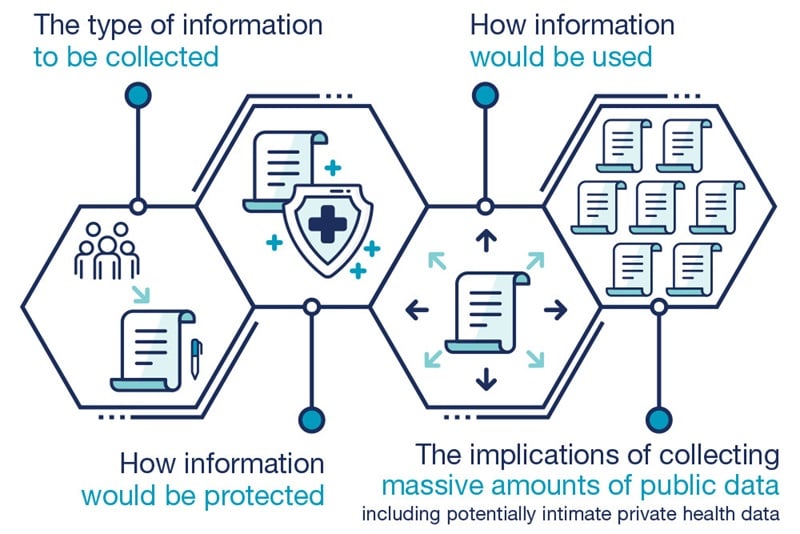The world has changed significantly since we published the inaugural article in our series on smart cities, where we examined the municipality of the future. Amid growing agreement that smart city technology has the potential to transform life in an increasingly urbanized world, the COVID-19 pandemic has created an unanticipated inflection point. The global economy has suffered, existing societal inequities have been amplified, and individuals and communities are adapting to what's next.

PERSPECTIVE
Smart cities roundtable part two: What's next for smart city technology
The public desire for change and significant government infrastructure stimulus spending has created the opportunity to invest in future-facing smart city solutions to pressing issues, including:

At this defining moment in world history, we have the unique opportunity to redefine the role and evolution of smart city technology to ensure that its net impact will be positive. These complex issues can be addressed by looking at how, where, when and by whom smart city technology is developed, deployed, regulated and refined.
Public-private partnerships and governance models for smart cities
While there are a variety of global smart city projects in progress, Sidewalk Labs’ recent shutdown of its plans for Toronto has garnered the most attention. After more than two years of preparation, negotiation and robust debate, Sidewalk Labs’ CEO Daniel L. Doctoroff announced the end of the ambitious partnership slated to transform Toronto’s Quayside into the world’s first smart neighbourhood.
Sidewalk Labs’ departure from Toronto has affected several sectors and all levels of government, with the added sting that COVID-19 has reinforced the immediate need for smart city technology.
The end of Quayside highlights jurisdictions that act as magnets for such projects, whose features include innovation, tech-friendly regulations, and less stringent privacy and data protection laws. In this context, certain jurisdictions have been leading the race. For example, smart cities are a key part of the Korean government’s industrial policy, with Seoul as a shining example. In Japan, Toyota is building a 175-acre smart city at the base of Mount Fuji: aptly named “Woven City,” the project will be a testing ground for a network of robotics, AI and smart homes.
Looking forward: smart city investments and public spending
While Sidewalk Labs’ departure from Toronto upset many, it should not derail the evolution of smart cities and smart city technology in Canada. Many countries—including Canada—are expected to invest heavily in infrastructure post-COVID-19 to stimulate their economies.
Now is the ideal time to dedicate public funds to smart city technology, both for future pandemic planning and to support the robust tech ecosystems in Montréal, Vancouver and Toronto. With Canada’s world-class tech talent and emphasis on innovation, COVID-19 has reinforced the importance of dedicating public funds to bolstering the economy and creating safer, greener communities.
The pandemic has also provided a rare glimpse into a greener future, one that could last by dedicating public funds to the adoption of smart city technology. For example, investing in the widespread implementation of autonomous vehicles (AVs)—perhaps electrically powered—could reduce air pollution and promote economic growth.
Redefining mobility in a pandemic-plagued world
COVID-19 has prompted communities of all sizes to reconsider the safe transport of people, goods and services. In Toronto, for example, the impact on the city’s public transportation system has been significant, with ridership down as much as 86 per cent. As people are increasingly concerned with the safety risks posed by public transportation, it’s worth considering the economic and environmental implications of a notable shift to car use, either for the duration of the pandemic or on a more permanent basis.
In regions with higher rates of COVID-19 infection, AVs may offer some advantages in terms of reduced human interaction and slow-speed, touchless delivery. While the AV sector is working toward the realities of a driverless future and COVID-19 has paused real-world testing, Michelle Avary, Head of Automotive and Autonomous Mobility at the World Economic Forum, notes that AVs offer “biosafety,” which is particularly important given the disproportionate infection rates among essential workers.
It’s also worth considering how pandemics impact our conception of on-demand shared AV fleets, and how drones could become a long-awaited fix to the last-mile distribution challenge.
Smart city applications and future pandemic planning
COVID-19 has accelerated a global interest in smart city applications that could predict the next pandemic and mitigate its impacts, including:
- contact-tracing protocols
- cleaning robots
- monitoring and delivery drones
- the use of AI and big data to track and prevent outbreaks
As dense urban centres are more vulnerable to large-scale infection, integrating smart city technology is a crucial step in preparing for the next pandemic.
Privacy and data governance considerations
While many are arguing for an expedited adoption of smart city technology to prepare for the next pandemic, privacy — and in particular, the collection and use of personal data — is a perennial concern. Smart city technology relies on connected systems, sensors and devices, and as such, organizations and individuals alike continue to question the following:

There are a number of ways to protect the data collected by smart city technology, including implementing comprehensive security and cybersecurity protocols, and establishing a meticulous vendor selection process.
With a cross-practice team of lawyers who focus on providing solutions to smart city planning and implementation challenges, BLG is pleased to continue to share highlights in this space with smart city stakeholders.
Key Contacts & Expertise
-

Kevin McGivney
Partner
Services
- Municipal Liability
- Police Law & Liability
- Appellate Advocacy
- Defamation & Media Law
- Insurance Claim Defence
- [See more on full bio]
-

Edona Vila
Partner
Services
- Products Law
- Health Care & Life Sciences
- Transportation
- Cybersecurity, Privacy & Data Protection
- Autonomous Vehicles
- [See more on full bio]
-

Robert Wood
Partner
Services
- Commercial Arbitration
- Real Estate Disputes & Litigation
- Public Law Litigation
- Expropriation
- Municipal Law
- [See more on full bio]
-

George Wray
Partner
Services
- Products Law
- Municipal Liability
- Cybersecurity Disputes
- Automotive
- Autonomous Vehicles
- [See more on full bio]